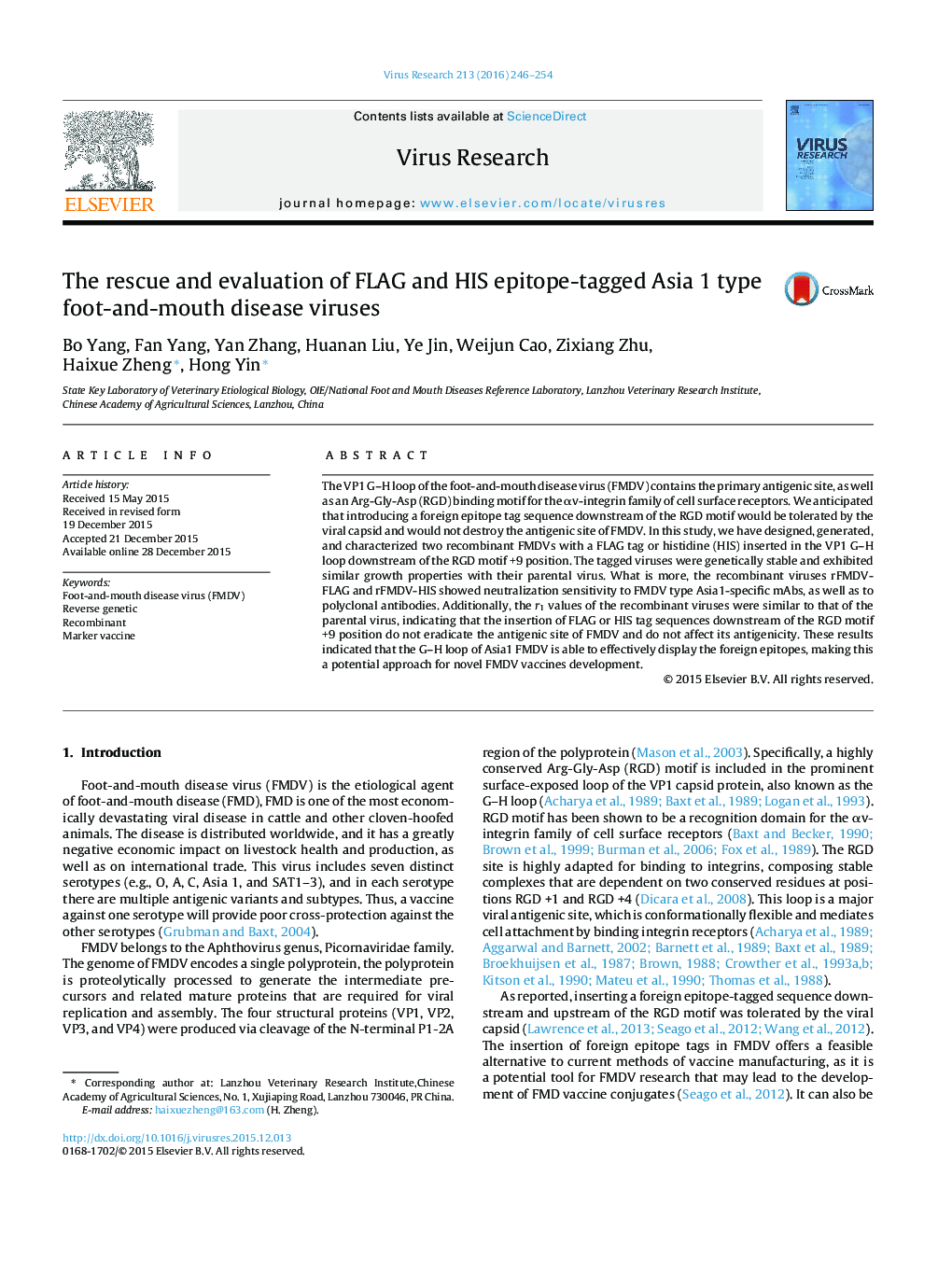| Article ID | Journal | Published Year | Pages | File Type |
|---|---|---|---|---|
| 3427916 | Virus Research | 2016 | 9 Pages |
•Two epitope-tagged viruses infectious clone with foreign epitope in the RGD + 9 of VP1 G–H loop were generated indicated RGD + 9 also can be regarded as an insertion for foreign genes.•The foreign epitope can be stably expressed on the rescued virus after passage in BHK-21 cells.•The insertion have no impact on the antigenicity of the FMDV both in vitro and in vivo.•These results laid the foundation for the distinguishing between vaccinated and FMDV-infected animals and the development of novel FMDV vaccine.
The VP1 G–H loop of the foot-and-mouth disease virus (FMDV) contains the primary antigenic site, as well as an Arg-Gly-Asp (RGD) binding motif for the αv-integrin family of cell surface receptors. We anticipated that introducing a foreign epitope tag sequence downstream of the RGD motif would be tolerated by the viral capsid and would not destroy the antigenic site of FMDV. In this study, we have designed, generated, and characterized two recombinant FMDVs with a FLAG tag or histidine (HIS) inserted in the VP1 G–H loop downstream of the RGD motif +9 position. The tagged viruses were genetically stable and exhibited similar growth properties with their parental virus. What is more, the recombinant viruses rFMDV-FLAG and rFMDV-HIS showed neutralization sensitivity to FMDV type Asia1-specific mAbs, as well as to polyclonal antibodies. Additionally, the r1 values of the recombinant viruses were similar to that of the parental virus, indicating that the insertion of FLAG or HIS tag sequences downstream of the RGD motif +9 position do not eradicate the antigenic site of FMDV and do not affect its antigenicity. These results indicated that the G–H loop of Asia1 FMDV is able to effectively display the foreign epitopes, making this a potential approach for novel FMDV vaccines development.
